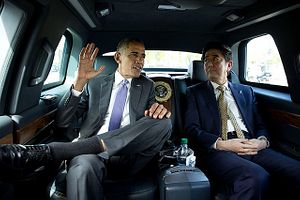This week started with a bang with the news that the twelve states that have been party to the Trans-Pacific Partnership (TPP) negotiations, over a process spanning months for some and years for others, had come to a final agreement on the text for the deal. Make no mistake: this is a big deal. The TPP states, between them, represent 40 percent of the global economy and a quarter of its trade. They are home to 800 million people, representing 12 percent of global population. Though the text of the agreement is finalized, the TPP still has a ways to go before it actually becomes binding on its members, i.e. before it “enters into force.”
The TPP can come into force in two ways. The first:
- All TPP members complete their respective domestic treaty ratification processes for the TPP.
- The TPP comes into effect 60 days after the 12th TPP member completes its ratification of the deal.
Of course, the TPP is not an uncontroversial free-trade agreement. In each and every member state, there is considerable opposition from domestic interest groups and stakeholders. It’s entirely possible that some states that agreed to participate in the talks and agreed on Monday to the finalized text could end up failing to ratify the agreement. That’s where the second mode of entry into force comes into play. If two years elapse and all signatories still haven’t ratified the agreement, the following conditions need to exist in order for the TPP to come into force:
- At least six original signatories have to have successfully ratified the agreement.
- Those six signatories, between them, must represent 85 percent of the total GDP of the twelve original signatories.
That last clause is important. The United States and Japan between them represent just shy of 80 percent of the GDP of the twelve original TPP signatories (specifically, the U.S. represents nearly 62 percent of TPP GDP and Japan accounts for 17 percent). Basically, the TPP can’t come into force if either of these states fail to ratify the agreement in their domestic legislatures because there would be no way for the remaining signatories to fulfill the 85 percent of GDP requirement (even if the United States and all states but Japan ratify, the eleven would stand at 83 percent of GDP).
This means if you care about the TPP at all, the two countries to watch now are Japan and the United States. The deal is controversial in both countries and both U.S. President Barack Obama and Japanese Prime Minister Shinzo Abe will have a tough time ahead in their legislatures. Abe, admittedly, will have easier time in Japan–though his Liberal Democratic Party originally opposed Japan’s participation in the TPP, it came around from outright opposition to trying to get Japan a better deal. The story in the United States is more complicated, with Obama’s own Democratic party largely opposing the deal on account of their perception that the TPP would harm U.S. workers and interests. Currently, support for the TPP in the United States has resulted in a strange marriage of Republicans, who normally loathe the administration’s foreign policy initiatives, and a president with a year and change left for his term in office.
Ultimately, the fate of the TPP is down to U.S. and Japanese domestic politics. All this said, it’s unlikely that the agreement will be shot down in either state’s legislature (yes, that includes the United States). This means that the TPP could potentially come into force before late-2017, provided the other ten members successfully ratify. If even one state that isn’t Japan or the United States fails to ratify the agreement, we’ll see the TPP’s entry into force in December 2017.

































